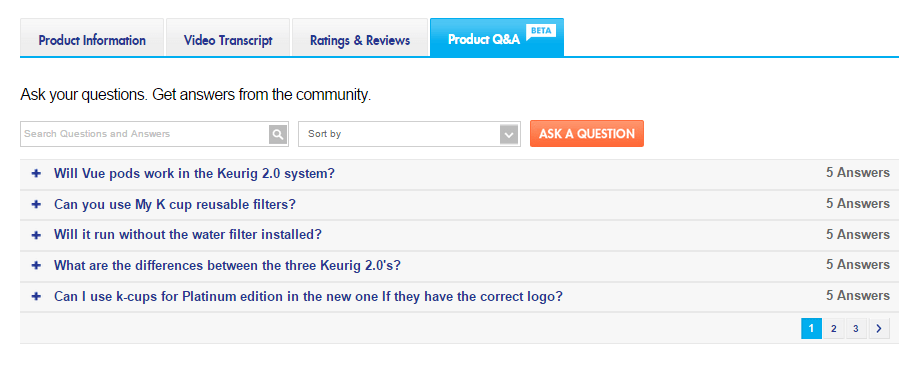Even though it is general belief amongst many ecommerce site owners that no one reads product description, it is a costly mistake to be made. People aren’t reading your description because you have not written for them and simply copied it from your manufacturer supplied information.
Many marketers make another mistake of simply describing the product instead of focusing on what’s in it them for the users who are actually going to be buying those products.
Let’s talk about simple ways to improve your product description that will sell your products.
1.Focus on the buyers not the products
Before you start writing for product description, you should research on who is your ideal buyer is.
What type of users will be interested in your product? What interest them? What age group are they? How much do they know about your product?
Start asking above questions to yourself and write-down the answers for each products that you are going to be writing the product description about.
Once you know answers to above questions, you can move forward with your product description.
Example of the great product description
https://www.harrys.com/products/the-truman-set
Look at the way Harry’s product description. They articulate and relate their product description based on the things that matters to their target audience and emphasising that their products meet those things that matters.
2.Create list of benefits & features of the product
It is quite certain that most of the ecommerce website designers & copywriters want to write about the features of their products and are interested in showcasing what their product can do. Let’s be honest, most people don’t want to know about all the crazy features that your product has, they want to know how and why your features will benefit them.
Williams Sonoma does this really well at this. They know that everyone shopping on their website is not expert at buying at cooking pen, therefore all of the features need to be explained in a way that will make sense to the buyer.
Also they have created separate section for dimensions.
3.use the tone and language of your target market.
You need to understand first, who is your target market. Let’s say that you run toys store for kid, parents are the one, who will come on your website and not the Kids. You need to speak to the parents explaining the benefits to kids and why they will love your products.
http://www.toysrus.com.au/little-tikes-cook-n-play-outdoor-bbq_1181222/
Look at the product description written for little outdoor BBQ set for kids play. It is addressed to parents mentioning the kids in the description.
4.Make it easy to scan rather than reading bulky paragraphs.
Most product descriptions on ecommerce sites are large text paragraphs without use of proper bullet points, numbering and proper formatting in place. As an eCommerce web design agency, we always recommend to keep the paragraph short and concise.
If you really want your readers to read about your product or impress about your products, you have to make it easy for them to read. More efforts you put on your design, include images, quotes, bullet points etc., the better it will be for them to scan and read it quickly.
Here’s a check list of a few things you can do to improve the readability of your descriptions:
- Reread your description, and check for typos and grammatical mistakes
- Shorten your sentences-short, concise sentences are easier to read
- Use bullet points when it makes sense to-
- bullets are easier to scan
- Write a strong, and compelling headline text for your description
- If possible user images in your description
5.Answer your customer’s questions
No matter what you sell, no matter how simple, even if it is just plastic plates, your customers will always have questions!
It is these questions, often, that will end up stopping your potential customer from becoming your actual customer.
Since you know that, why wait for them to ask their questions? Why not answer all (or as many as you can) of their questions in your product
Now it’s your turn!
What strategy do you apply when writing product descriptions; do you use generic or customised product descriptions? Do you have any tips on how to write effective descriptions, or has there been something specific that worked particularly well for you? I would love to hear your ideas and experience in the section below.







